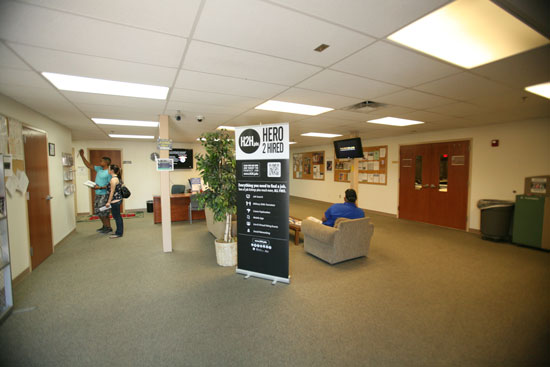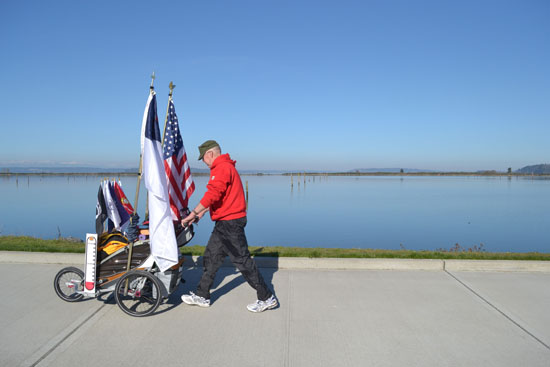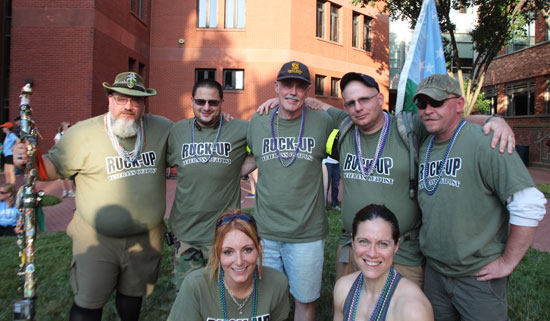By Kelsey Hightower, News21
A Goldsby, Okla.,-based nonprofit organization has assembled a national community of volunteers to help veterans and their families negotiate the U.S. Department of Veteran’s Affairs claims process.

Veterans wait to talk to a volunteer at the Goldsby Community Center in Goldsby, Oklahoma. (Photo by Kelsey Hightower, News21)
Every Thursday at Veterans Corner, which is south of Norman, Okla., former military from across the country get assistance in filing their disability claims. The setting is modest. Volunteers work quickly to unload tables, printers, and office supplies to set up Veterans Corner in the Goldsby Community Center. In minutes, an empty building is transformed into an office and waiting area for the average 150 walk-ins.
This has been the routine for five years.
Dale Graham, founder and director of Veterans Corner, said that the organization was established to help veterans who say the VA wasn’t helping them get the disability benefits they deserved.
When Graham returned from his deployment in Vietnam he went to therapy sessions for his post-traumatic stress disorder.

Gulf War veteran Charles Russell and his wife Janet seek help filing a VA claim at the Goldsby Community Center. (Photo by Kelsey Hightower, News21)
“I went to the VA in the early ’90s and talked to them about [my] problems,” he said. “They didn’t want to hear about it and they certainly weren’t going to do anything about it.”
Graham set out to change that. “I was convinced to learn their system,” he said.
He began by helping his friends work through the claims process. Graham continues to fight for fellow veterans with the support of his 100 volunteers.
Veterans Corner has helped approximately 20,000 veterans and surviving spouses receive about $50 million annually in VA disability benefits, Graham said. Through this journey, as Graham describes it, his PTSD has improved.
“If you’re helping somebody else, you’re helping yourself,” he said.









